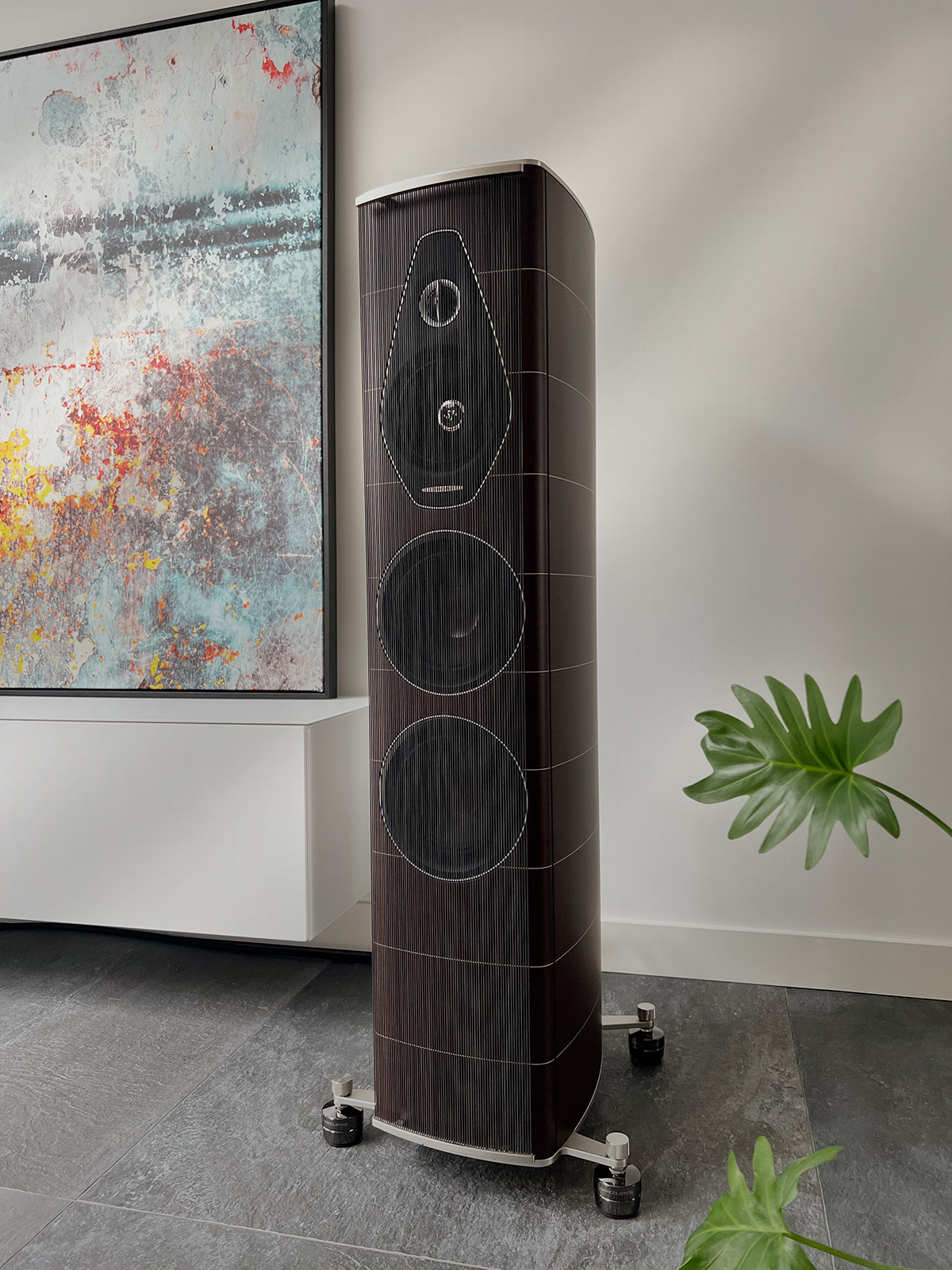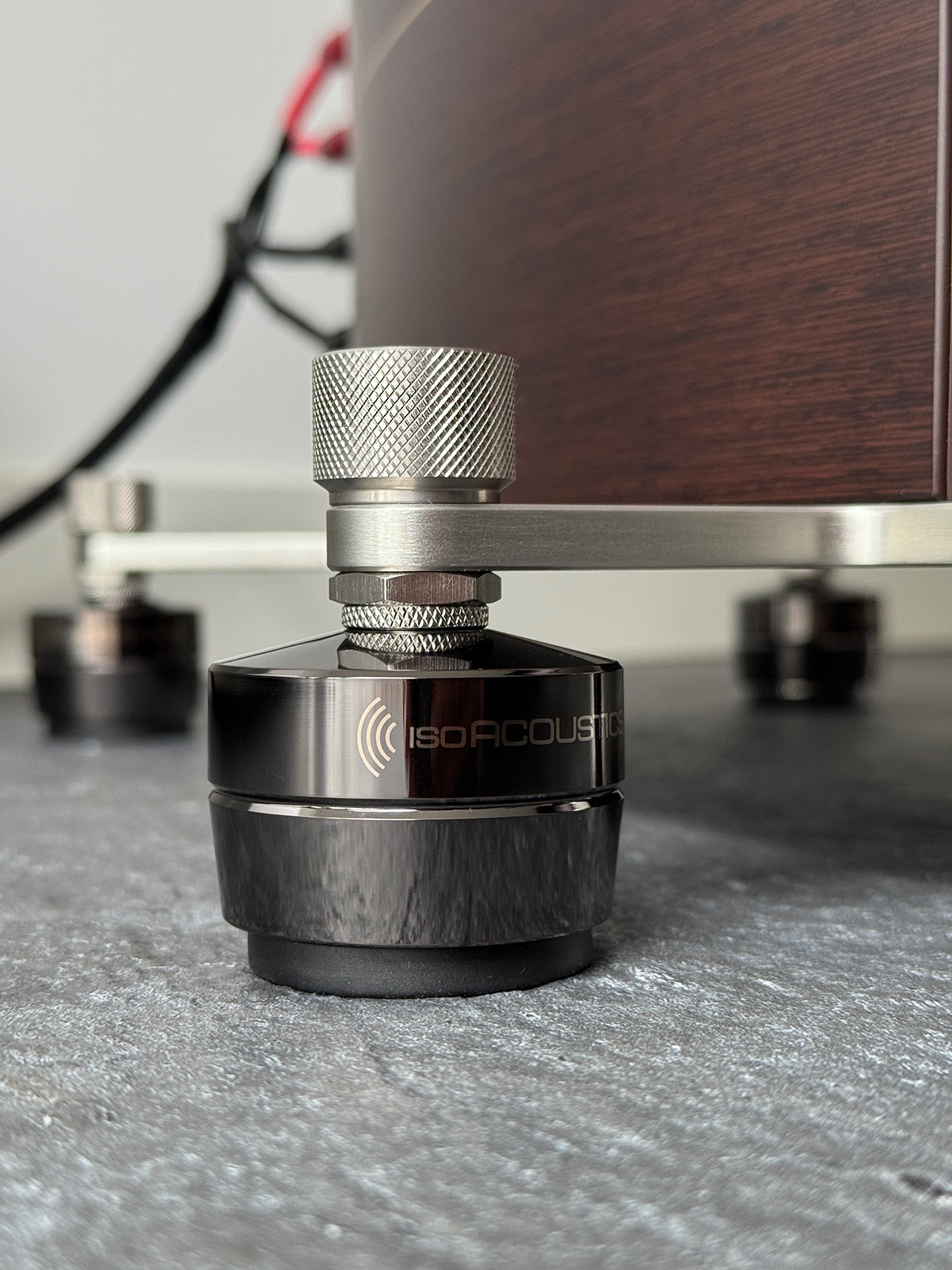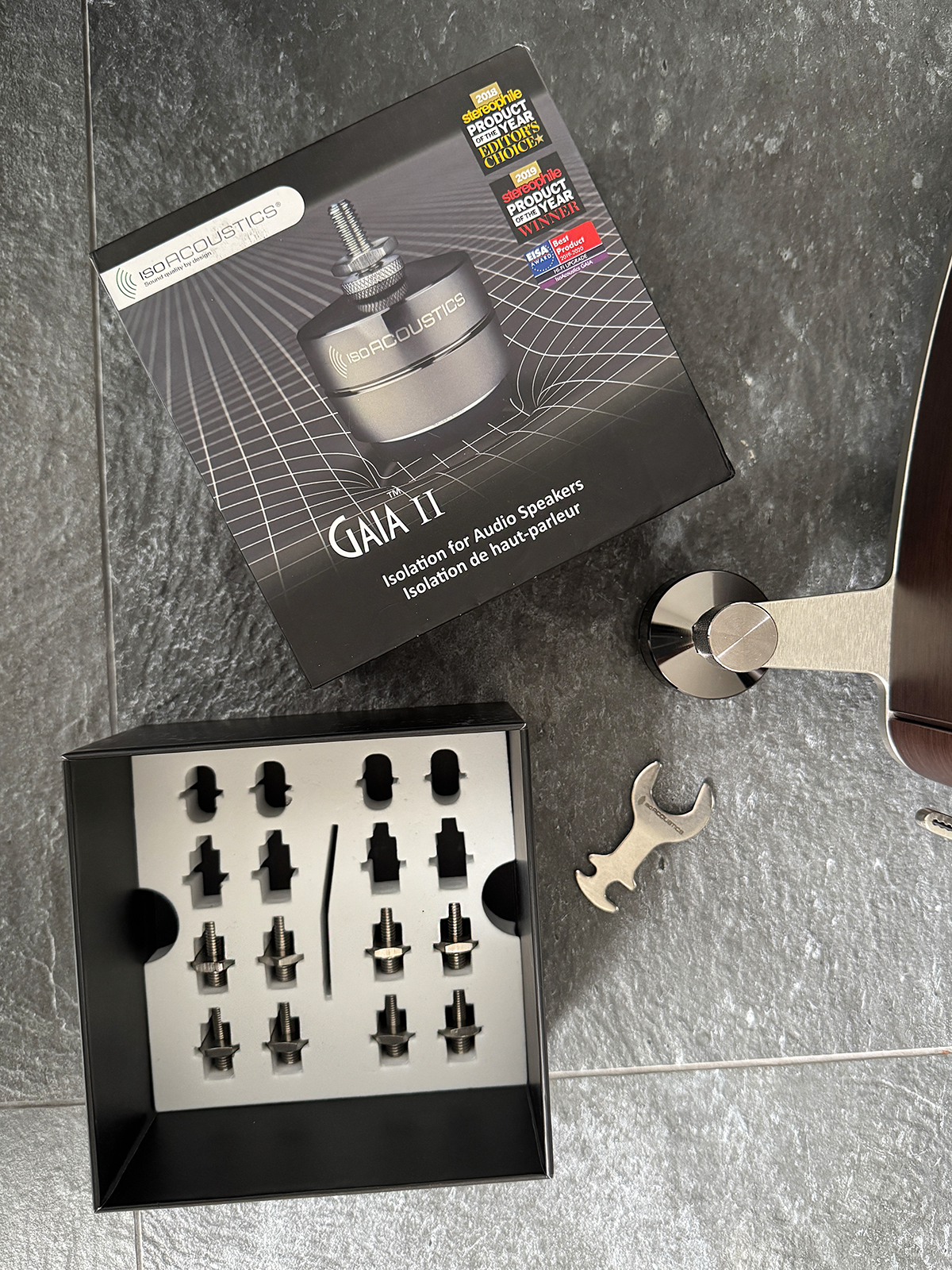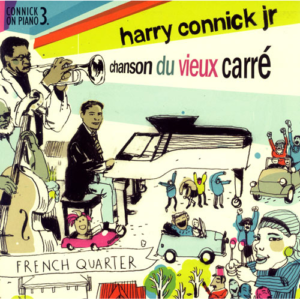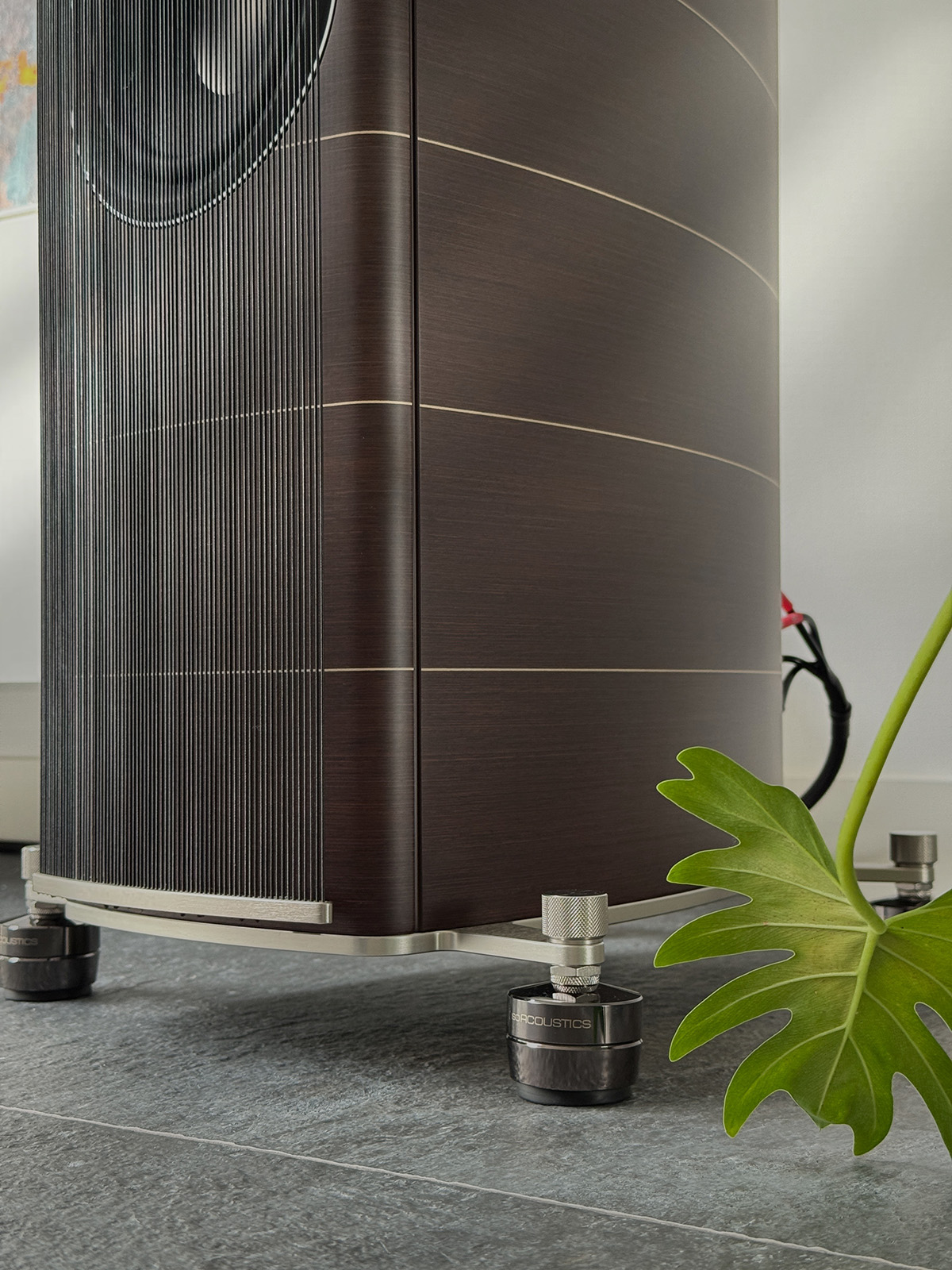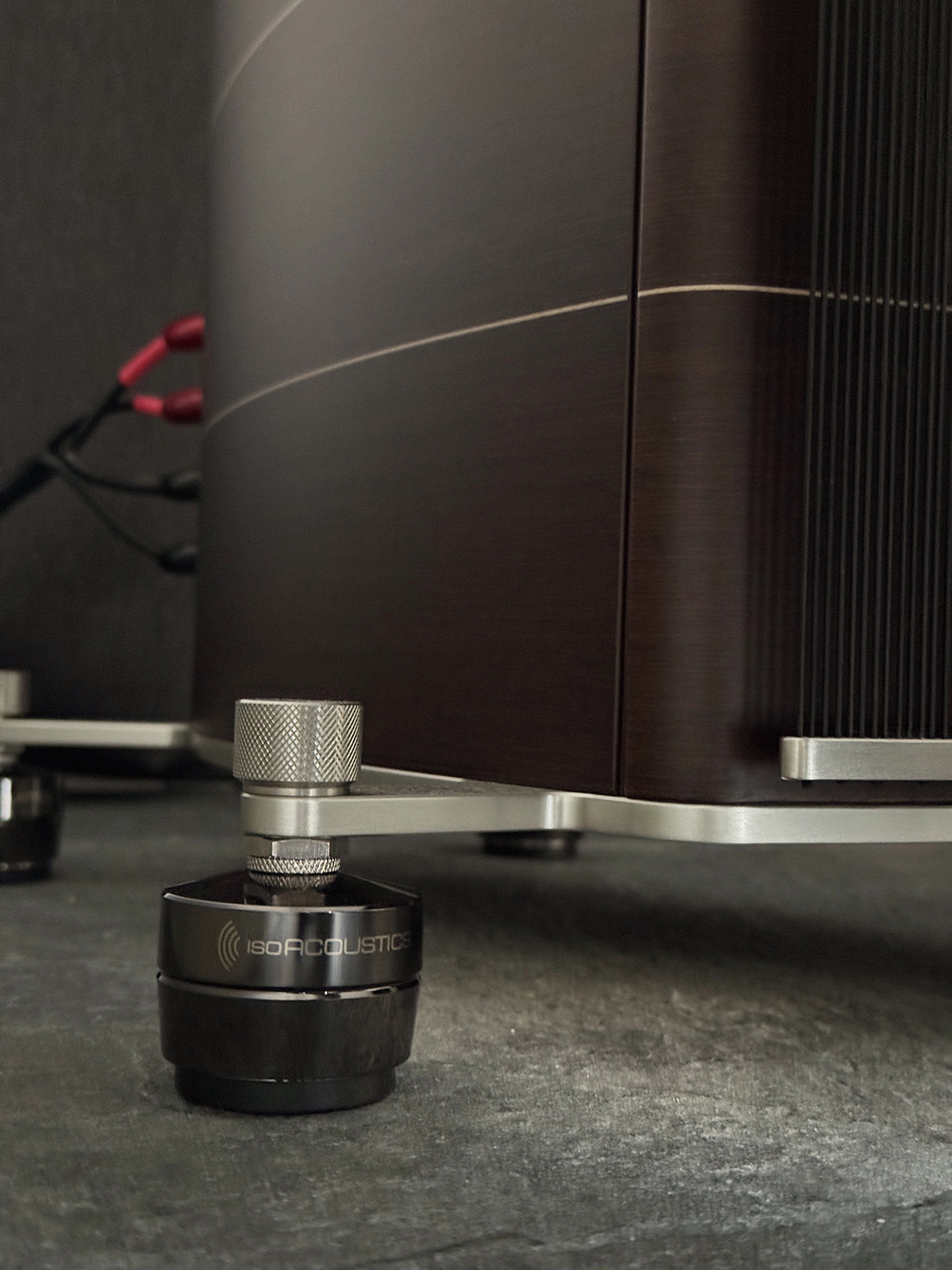Dave Morrison, founder of IsoAcoustics, spent over 20 years at the Canadian Broadcasting Corporation (CBC), where he was involved in the design and construction of broadcast studios across the country.
During his time at CBC, he developed deep expertise in studio acoustics, vibration control and how physical structures affect sound. Drawing from this experience and blending a passion for music with a practical, engineering-driven approach to acoustic isolation, he founded IsoAcoustics in 2012. The Canadian company is based in Markham, Ontario.
Today, IsoAcoustics has become known for its innovative approach to isolation in high-fidelity audio reproduction. Rather than relying solely on mass or damping, IsoAcoustics uses patented isolators to control energy across multiple axes, allowing speakers to perform cleanly, free from smearing or room-induced artifacts.
Although initially aimed at studio monitors and professional audio setups, IsoAcoustics quickly became a favorite among audiophiles and high-end manufacturers alike, from mastering engineers to home audio enthusiasts.
IsoAcoustics stands out for its scientific approach and measurement-based designs, consistently delivering proven real-world results. Its focus on mechanical grounding and controlled decoupling has made the brand a benchmark in the field of isolation. By channeling mechanical energy and allowing speakers to “float” in a controlled manner, IsoAcoustics products reduce floor interaction, reflections and distortion, resulting in clearer, more accurate sound.
While the GAIA series is perhaps their most widely recognized product line, IsoAcoustics also offers a broad range of isolation solutions, including stands for studio monitors, platforms for turntables and electronics and custom solutions for professional and commercial environments, all designed with the same core philosophy.
I had already heard plenty about the success and positive experiences surrounding IsoAcoustics. But when I saw their products installed under some of the most leading loudspeaker brands during my visit to High End Munich, I couldn’t wait to try them out myself!

- Test equipment:
– Accuphase E-800S Class A
– Streamer: Eversolo A8 + upgraded LHY LPS
– DAC: Chord TT2 + Chord MScaler
– Sonus Faber Olympica Nova III
Introduction
In high-end speakers, performance is typically linked to drivers, cabinet designs and crossovers, yet the role of speaker-to-floor interaction and cabinet behavior is often underestimated. This is where IsoAcoustics steps in, redefining isolation and decoupling to dramatically enhance clarity, detail and spatial resolution.
We’re testing the IsoAcoustics GAIA on none other than the refined and revealing Sonus Faber Olympica Nova III, not specifically for its own sonic signature, but because this speaker can clearly reveals the GAIA’s full potential.
The Gaia has a weight class, in case of the Sonus Faber beeing 35kg, version II is the right model.
Weight Class
Gaia I Between 55kg 100 kg / 121–220 lbs
Gaia II Between 32kg – 54 kg / 70–120 lbs
Gaia III max 32 kg / max 70 lbs

Build Quality & Design
Opening the box, you’re immediately greeted by a clear sense of quality and attention to detail. The GAIA II isolators are meticulously machined from stainless steel with a sleek, dark chrome finish that feels both refined and premium.
Each box holds four isolators, Multiple thread sizes (M6, M8, M10) for universal compatibility. The design elegantly combines function and aesthetics: it effectively absorbs vertical vibrations while resisting lateral motion that can blur stereo imaging. IsoAcoustics advices positioning the logo facing forward or backward for optimal performance.
Installation is intuitive: screw the feet into your speaker’s base, ensure the correct orientation (logo facing forward or backward) and carefully lower the speaker into place.
That said, depending on the weight of your speakers, it’s not always a one-person job, unless you fancy deadlifting a 63KG Sonus Faber Stradivari G2 before breakfast.
Why It Works: A Brief Technical Insight
The following section clarifies how and why IsoAcoustics’ isolators are so effective. Their unique design provides vertical compliance, effectively absorbing speaker-generated vibrations, while simultaneously offering strong horizontal resistance.
This balance is key: vertical movement helps dissipate internal energy, while lateral stability prevents unwanted motion that can smear stereo imaging.
Instead of mechanical energy being transferred into the floor and then reflected back into the cabinet, the isolators manage and dissipate it within the system. The result is a cleaner, more focused soundstage, with greater clarity and stability across the frequency range.

GAIA II Listening Test
To put my own senses to the test and truly understand what the IsoAcoustics GAIA II can deliver, I curated a selection of music that covers a wide range of genres and sonic characteristics. These are songs I know inside and out, I’ve listened to them countless times on my system, so any change, no matter how subtle, is instantly noticeable.
I started my test with Contrasts & Parallels by the Kálmán Oláh Trio, a beautifully recorded jazz piece where the piano, bass and drums dance around each other in a wide, open soundstage. It is the kind of track that immediately reveal how well a system handles imaging and decay.
Switching gears, The Padstow Lifeboat by Malcolm Arnold brings a full force of orchestral brass and percussion into play. It is a piece that can easily overwhelm a setup if vibration isn’t properly controlled. Can the the GAIA II keep the floor out of the equation and maintain clarity when the dynamics surged?
The next track Before My Train Comes by Mark Knopfler, a track built on intimacy and texture. The warmth of Knopfler’s voice, the subtle details in the guitar, these are the kinds of nuances that can get clouded by unwanted resonances. It is a perfect test for midrange focus and spatial precision.
For something more vibrant, I chose Bourbon Street Parade by Harry Connick Jr., which is full of brass, swing and layered instrumentation. It is a lively track where timing and bass control means everything. With the GAIA II in place, I want to see if that energy can be preserved without things becoming smeared or congested.
Finally, C’est Magnifique by Melody Gardot and António Zambujo brings a completely different flavor, lush vocals, soft strings and a relaxed, atmospheric mix. It is a track that thrived on microdetail and air. Here, the question is whether the GAIA II can bring out the emotional subtleties without the interference of room-induced artifacts.

Contrasts & Parallels” by the Kálmán Oláh Trio from Arabesque 2009 – A high-fidelity compilation by Crystal Cable
With Gaia isolators in place, the most noticeable improvements:
-
Tighter, more controlled bass – low frequencies are cleaner and less boomy, especially in the double bass
-
Greater image stability – instruments remain precisely anchored in the soundstage, even during the complex passages
-
Improved clarity and separation – the piano’s timbre becomes more lifelike, with inner details and decay more apparent
-
Lower perceived noise floor – background silence feels deeper, enhancing the overall musical flow and realism
Compared to the spikes, the Gaia isolators decoupled the speakers more effectively, allowing micro-details and transients to emerge more clearly.
Although this was the first test track and I had already heard many positive things about the GAIA isolators, I was still genuinely impressed by what I heard. Everything sounded so open and clear, subtle nuances seemed to leap out.

The Padstow Lifeboat by Arnold is a powerful and emotionally stirring orchestral piece. Originally composed by Sir Malcolm Arnold as a tribute to the heroic lifeboat crews of Cornwall, the composition is rich in dynamic contrasts and maritime atmosphere.
This track was especially valuable for its broad dynamic range, deep brass sections and room-filling orchestral swells. Played through the Nova’s decoupled with Gaia feet, several improvements become quickly apparent.
-
Tighter and cleaner low-end – the tuba and bass drum hit with authority but without overwhelming boom, offering greater control in the lower registers
-
Expanded soundstage – the orchestral layout felt broader and deeper, with a clearer sense of instrument placement
-
Improved dynamic realism – sudden crescendos and swelling brass sections were rendered with more impact and less floor vibration
-
Better transient clarity – percussive accents and subtle string articulations were more defined
With Gaia isolators, ‘The Padstow Lifeboat’ became a truly immersive listening experience, brimming with energy, emotion and orchestral depth.
I had always found this song nearly unlistenable on my current setup. But with the GAIA II in place, I could hardly believe how good it sounded. The Padstow Lifeboat turned into a truly immersive listening experience, brimming with energy, emotion and orchestral depth. Total balance.

Before My Train Comes” by Mark Knopfler, from the album One Deep River, is a beautifully intimate track that blends Knopfler’s signature fingerpicked guitar style with subtle layers of instrumentation and a hushed, storytelling vocal delivery. The song’s gentle groove and restrained dynamics make it an excellent test track for assessing the finesse and tonal balance of your audio system.
When using IsoAcoustics Gaia isolators, the benefits become especially clear in:
-
Improved vocal clarity – Knopfler’s close mic’d voice sat precisely in the center, with a warm lifelike presence and no muddiness
-
Refined micro-dynamics – the delicate guitar articulations and background textures (like soft percussion) were rendered with greater separation and realism
-
Tighter low-mid control – the bass line remains present but never overbearing, allowing the midrange to breathe more
-
Stable soundstage – instruments remain locked in place with better image depth and dimensionality
Although I’ve listened to this album countless times, hearing it with the GAIA II made it feel entirely new, warmer, more intimate and deeply engaging. Like a gentle story whispered at the end of a long day.

Bourbon Street Parade” by Harry Connick Jr., from the album Chanson du Vieux Carré (2007), is a joyful, brassy New Orleans jazz number that bursts with energy, rhythm and live-room atmosphere. With its drums, vibrant horn sections and swinging piano, this track is a true system workout, particularly for testing dynamics, timing and control in the lower and mid registers.
The improvements were striking!
-
Far tighter and more controlled bass – previously, the kick drum and upright bass could sound a bit bloated or smeared, especially when the mix gets busy. With Gaia isolators, the low-end was punchy, defined and rhythmically locked in
-
Crisper brass articulation – trumpets and trombones cut through the mix with more bite and shimmer, without harshness or compression
-
Better instrument separation – in such a busy live-style recording, the isolators helped prevent congestion, allowing each instrument to occupy its own space, especially in the midrange
-
Improved timing and groove – the overall pace of the song feels tighter and more cohesive, making the performance more engaging and lifelike
This track is the perfect reality check for setups claiming to handle live jazz with precision and flair. With the GAIA’s installed, ‘Bourbon Street Parade’ went from sounding like a pleasant show to feeling like I’d crashed a front-row French Quarter street party; lively, physical and ridiculously engaging. Fine, IsoAcoustics, you win!… I’m officially hooked!

C’est Magnifique – by Melody Gardot & António Zambujo, from the album Sunset in the Blue, is a tender Franco-Portuguese duet that exudes elegance, restraint and emotional warmth. The arrangement is minimal and refined: soft acoustic guitar, subtle orchestral textures and two voices dancing delicately around each other. It’s a track that invites deep listening, ideal for testing system resolution, spatial finesse and vocal realism.
The enhancements were in the micro details.:
-
Impeccable vocal separation – Gardot’s breathy French phrasing contrasts beautifully with Zambujo’s gentle Portuguese tone, both rendered with vivid clarity and presence
-
Enhanced spatial layering – the subtle string backdrop and ambient cues formed a lush, three-dimensional stage that blooms effortlessly with proper speaker isolation
-
Delicate bass and warmth control – where the low end previously lacked definition and tended to sound a bit loose or overly warm, it now felt tighter, more articulate and better integrated into the mix
-
Refined transient detail – every pluck, whisper and breath was now delicately portrayed, demonstrating the GAIA’s ability to lower the noise floor and bring out every nuance
‘C’est Magnifique’ is not a track that demands attention, it draws you in quietly, with intimacy and charm. Played with the IsoAcoustics Gaia’s installed, it transformed into a vivid, almost tactile experience that showcases just how lifelike a well-voiced system can sound.

If I had to describe my experience with the GAIA II in a nutshell: now I fully understand the praise they receive from audiophiles around the world.
From the moment I started listening, I noticed something had shifted. The IsoAcoustics GAIA isolators genuinely enhanced the spatial presentation of my system. The soundstage opened up, not just wider, but deeper as well. Imaging improved to the point where I could clearly pinpoint instruments and vocals in the mix. It all felt more lifelike, as if I were sitting in the room with the musicians. The transformation was so immediate and profound, that it almost felt surreal.
Low-end notes became faster, deeper and more controlled. Kick drums no longer smeared into the room; instead, they hit with impact and precision. Instead of a bloated or boomy low end, the IsoAcoustic GAIA’s delivered tighter, more controlled bass that integrated seamlessly into the overall soundstage. This refinement in the low frequencies also contributed to clearer mids and highs.
The soundstage was widened and deepened. Instruments floated in space with greater separation. Vocals felt more focused and centered, as if pulled into clearer view. Textures, like fingers sliding on strings or the breath between vocal phrases, became more audible.
The GAIA II is more than just a nice accessory, it is a performance tool that reveals what your speakers are truly capable of. The Nova III already delivers lush mids and a musical top end. However, on certain tracks, the bass always felt slightly bloated and imaging at times, while wide, sometimes lacked razor-sharp placement. There was a mild haziness, not a flaw of the speaker, but likely due to floor interaction and room acoustics.
For anyone trying to squeeze that last bit of performance from a high-end system, the IsoAcoustics GAIA are a real upgrade. They tackle a factor many overlook: the interaction between speaker and floor. Once you hear what they correct, it’s hard to un-hear it.
‘I didn’t even know I needed them until I had them, that’s exactly how IsoAcoustics GAIA made me feel’
-JJAZZIFI
For all the skeptics out there: can a few speaker isolators really make such a difference?
After an extensive listening test, I can say with full conviction:
‘YES, the IsoAcoustics GAIA can!’
And that’s why I highly recommend the GAIA.
Pros:
- Enhanced sound clarity and detail: A noticeable improvement in overall sound clarity, with tighter bass, more focused imaging and a more expansive soundstage
- Effective vibration isolation: The Gaia isolators effectively decouple speakers from the floor, reducing unwanted vibrations and resonance that can muddy the sound
- Improved bass control: a more controlled and accurate bass response, removing excessive boominess.
- High-Quality build and aesthetics: Elegant design, adding a premium look to speaker setups
- Ease of installation: The isolators come with multiple thread sizes and clear instructions, making easy to install on various speaker models
Cons:
- Substantial cost: The GAIA isolators are undeniably a premium product and their price may be a consideration for some
- Installation challenges with heavy speakers: For larger, heavier speakers, installing the isolators may require additional effort or assistance
- Additional accessories for carpeted floors: To achieve optimal performance on carpeted surfaces, optional carpet discs are recommended, which incur additional cost


